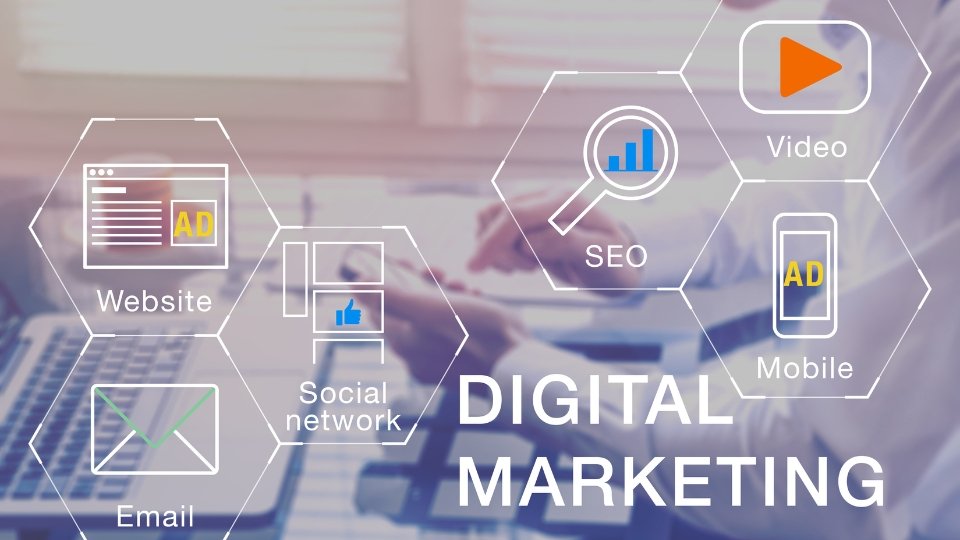Although launching a startup is an exciting experience, there are obstacles along the way, particularly in the areas of customer acquisition and brand awareness. Even with a tight budget, companies may benefit from the potent tool that is digital marketing. This is a step-by-step tutorial to help you with your startup's digital marketing.
Step 1: Establish Your Objectives and Goals
Determine your goals before launching any digital marketing campaigns. Typical objectives for new businesses include:
- Increasing the awareness of your brand among your target market.
- Gathering contact details from possible clients is known as lead generation.
- Getting leads to become paying clients is known as customer acquisition.
- Increasing sales and profitability is known as revenue growth.
- Retaining current clients involves keeping them interested and faithful.
Clearly defined goals will guide your strategy and help you measure success.
Step 2: Recognize Who Your Target Market Is
It's important to know your audience. Do market research to ascertain:
- Demographics: Gender, age, place of residence, income, level of education, etc.
- Psychographics: Values, lifestyles, habits, and interests.
- Pain points: Difficulties or issues that your service or product resolves.
- Digital Habits: Content genres they enjoy, social media sites they frequent, etc.
You may use this information to better target your marketing so that it appeals to your target demographic.
Step 3: Establish a Robust Internet Presence
The cornerstone of any digital marketing plan is their website. Make sure it is:
- User-friendly: Simple to use, quickly loaded, and with a clear structure.
- Mobile-optimized design is responsive and functions well on tablets and smartphones.
- SEO-Optimized: To raise your website's search engine ranks, use on-page SEO techniques.
- Engaging Content: Provide insightful articles that respond to the concerns and queries of your readers.
Step 4: Create a content marketing strategy in step four.
For startups, content marketing is essential since it builds authority and reputation in your industry. The following should be part of your content strategy:
- Blog posts: Informative pieces that tackle the issues that your readers are facing.
- Whitepapers and e-books: Comprehensive manuals that must be downloaded via email.
- Videos: Explainer films, product demonstrations, and client endorsements.
- Infographics are easily shareable visual representations of facts or processes.
- Case studies are success narratives that demonstrate how your good or service addresses issues.
Publishing excellent content on a regular basis will help you draw in and keep your target audience.
Step 5: Leverage Social Media Promotion
Social media is a great way for new businesses to engage with their audience and increase brand recognition. To maximize social media usage:
- Choose the Right Platforms: Pay attention to the channels where your target market is most engaged (for example, visual items on Instagram, B2B on LinkedIn).
- Establish a Content Calendar: For consistency, plan and schedule postings ahead of time.
- Engage with the Audience: To foster relationships, reply to messages, comments, and mentions.
- Employ Paid Advertising: To test advertisements on social media sites like Facebook, Instagram, or LinkedIn, start small with a little budget.
Social media can drive traffic to your website, generate leads, and increase website traffic.
Step 6: Invest in SEO and Paid Advertising
Pay-Per-Click (PPC) advertising and search engine optimization (SEO) are essential for generating leads and visitors:
- SEO: To raise your search engine ranks, concentrate on both on-page (keywords, meta tags) and off-page (backlinks, guest articles) SEO. Long-tail keywords are simpler to rank for, so start there.
- PPC: To target particular keywords or audience segments, use social media and Google Ads. PPC is a fantastic method to gain exposure right away while your SEO campaign develops over time.
Step 7: Create and Maintain an Email List
One of the most economical forms of digital marketing is email marketing. To create and maintain an email list:
- Lead Magnets: Provide freebies (such as checklists and eBooks) in return for email addresses.
- Segment Your List: Based on user activity or demographics, segment your email list.
- Personalized Campaigns: Send emails that are specifically tailored to each section.
- Automated Drip Campaigns: Create recurring email sequences to gradually cultivate leads.
You can retain current customers and turn leads into paying ones with the aid of email marketing.
Step 8: Monitor and Analyze Your Performance
Utilize tools like email marketing software, social media analytics, and Google Analytics to consistently monitor and assess the success of your digital marketing initiatives. Key metrics to keep an eye on are:
- Website Traffic: Number of visitors, page views, and bounce rate.
- Lead generation: conversion rate and quantity of leads obtained.
- Customer acquisition: Customer lifetime value and cost per acquisition.
- Social media interaction: followers, comments, shares, and likes.
- Email Metrics: Open rate, click-through rate, unsubscribe rate.
Make use of these insights to improve your campaigns, hone your approach, and make sure your goals are being met.
Step 9: Always Improve and Adapt
In the ever-changing world of digital marketing, what works now might not work tomorrow. Test out new strategies on a regular basis, adjust to market shifts, and keep up with emerging trends and technologies. These actions will help your startup build a strong online presence, engage with its target market, and expand. Recall that in the always changing landscape of digital marketing, flexibility and consistency are essential.








